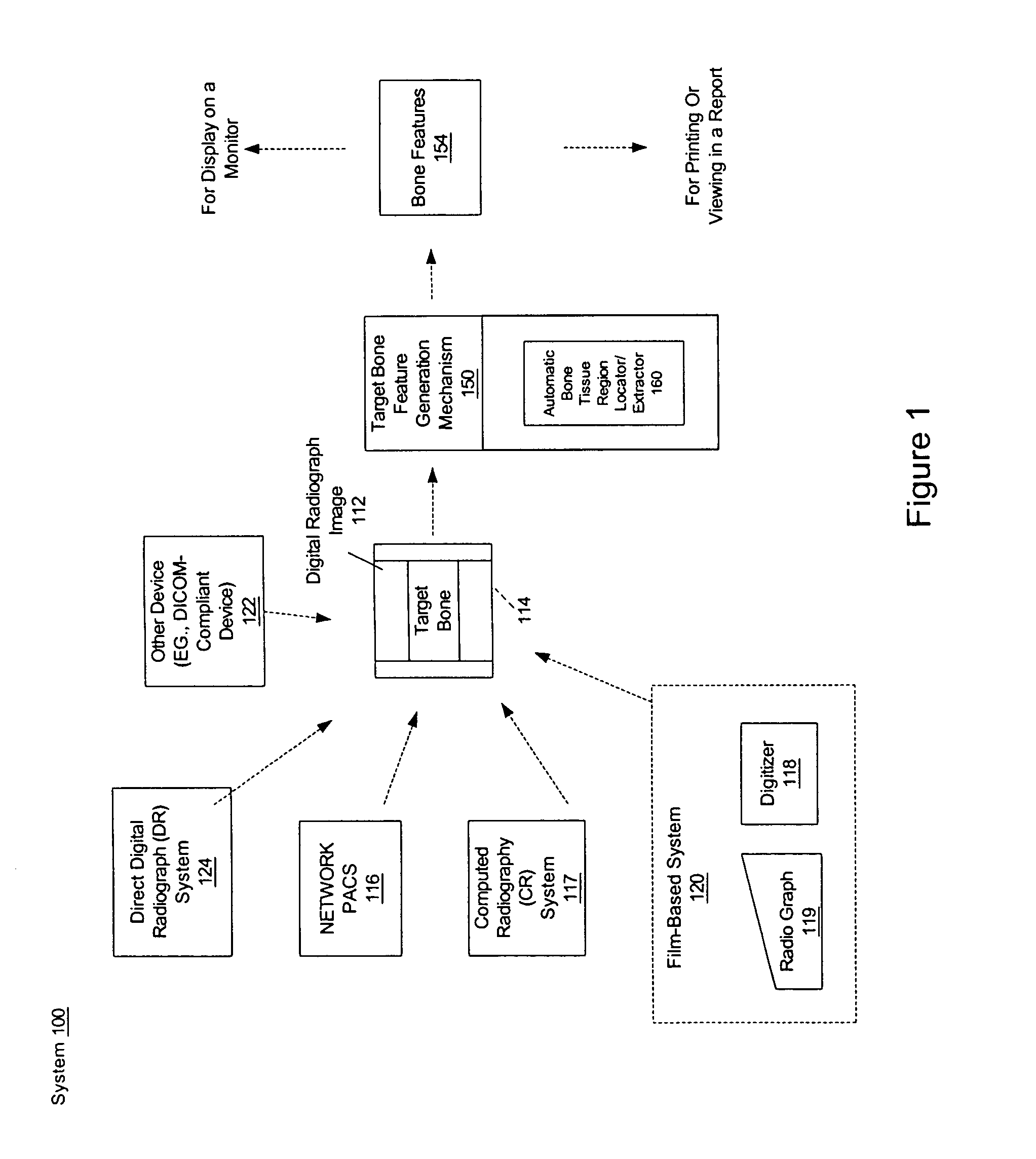Method and system for automatically identifying regions of trabecular bone tissue and cortical bone tissue of a target bone from a digital radiograph image
a digital radiograph image and target bone technology, applied in the field of image processing techniques, can solve the problems of inability or undesirable disadvantages of prior art approaches, inability to determine the specific density of cortical bone and trabecular bone, and limited application of qct in practi
- Summary
- Abstract
- Description
- Claims
- Application Information
AI Technical Summary
Problems solved by technology
Method used
Image
Examples
second embodiment
[0122 of Target Bone Feature Generation Mechanism that Employs a Two-Dimensional (2D) Bone Tissue Classifier
[0123]FIG. 19 is a block diagram illustrating in greater detail the target bone feature generation mechanism 150 of FIG. 1 in accordance with another embodiment of the present invention. The target bone feature generation mechanism 150 includes automatic bone tissue region locator / extractor 1960. The automatic region of bone tissue locator / extractor 1960 includes an automatic target bone contour generator 1910 for manually or automatically generating a target bone contour 1912 and for manually or automatically generating the middle or center axis 1914 of the target bone.
[0124]The automatic region of bone tissue locator / extractor 1960 includes an anchor point generator 1920 for automatically generating one or more anchor points 1922. In one embodiment, the anchor points include a neckline that is a line that is the minimum width of the target bone in the horizontal direction. T...
PUM
 Login to View More
Login to View More Abstract
Description
Claims
Application Information
 Login to View More
Login to View More - R&D
- Intellectual Property
- Life Sciences
- Materials
- Tech Scout
- Unparalleled Data Quality
- Higher Quality Content
- 60% Fewer Hallucinations
Browse by: Latest US Patents, China's latest patents, Technical Efficacy Thesaurus, Application Domain, Technology Topic, Popular Technical Reports.
© 2025 PatSnap. All rights reserved.Legal|Privacy policy|Modern Slavery Act Transparency Statement|Sitemap|About US| Contact US: help@patsnap.com



